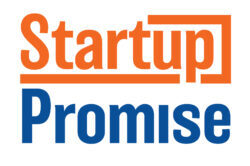- When Does a Descriptive Mark Supplemental Registration Improve Branding? - May 23, 2018
- Getting a Patent: Outline of a Patent Application - July 8, 2014
- What is a Trademark?Trademark Definitions & Considerations - September 11, 2013
Everyone in business understands how important branding is for the success of your company.
Originally, branding meant a way to tell one person’s cattle from another’s. Nowadays, a brand defines the identity, or the personality of a product, a company, a service, or even an individual. Businesses want to make their brand something that becomes familiar to their customers and something that generates positive feelings.
The American Marketing Association defines brand as the “name, term, design, symbol, or any other feature that identifies one seller’s goods or services as distinct from those of other sellers.” What can be branded? Names of businesses, associated logos, taglines, slogans, names of products, and even product shapes, sounds, smells, and colors can be part of your brand.

Do you have a question? Ask at the bottom of this post.
One of our advisors will answer!
A person often comes to me looking to register a trademark that they think comprehensively and accurately describes their business. But often the trademark is really just a description of their business, albeit a “fancy” or a “trendy” version. Applications for these types of descriptive marks are routinely rejected by the United States Patent and Trademark Office (USPTO) for registration on the Principal Register. According to the USPTO:
A mark is considered merely descriptive if it describes an ingredient, quality, characteristic, function, feature, purpose, or use of the specified goods or services.
Similarly, a mark is considered merely descriptive if it immediately conveys knowledge of a quality, feature, function, or characteristic of an applicant’s goods or services.
The determination of whether a mark is merely descriptive must be made in relation to the goods or services for which registration is sought, not in the abstract. This requires consideration of the context in which the mark is used or intended to be used in connection with those goods/services, and the possible significance that the mark would have to the average purchaser of the goods or services in the marketplace. (§1209.01(b); case citations removed)
As much as I know that applicants like to think they are unique and would like to be known as “the one and only provider” of their particular goods or services, in reality, multiple businesses provide similar goods and services.
The USPTO does not want to take common descriptions or industry specific terms of art out of the public domain, because all business owners should be entitled to use the jargon associated with their particular fields. Trademark owners tend to think this is unfair and do not like it when their marks are rejected for registration. But really, are these types of marks effective for branding?
A brand should represent the sum of all the valuable qualities of a product or service to the consumer.
For example, Pepperidge Farm® represents good old fashioned baked goods, Disney® represents a magical experience, and Sesame Street® represents an urban place just like where many children in their demographic live. The marks used by these companies such as the mill in the Pepperidge Farm® logo and the castle in the Disney® logo have all been carefully selected to convey their respective messages.
Does a mark that merely describes your goods or services really differentiate you from your competition?
Branding is used for consumer association, perception, education, and expectation. Your brand should:
- Have characteristics that differentiate it, especially from those who sell similar goods or services.
- Develop or align the expectations behind the brand experience. For example, a hamburger from McDonalds® in California should taste the same as one in Pennsylvania
- Highlight special or unique qualities or characteristics of your goods or services
- Embody the good will that you have worked hard to establish.
- Build trust with your customers.
- Encourage brand loyalty and advocacy.
So even though merely descriptive rejections can be frustrating to the trademark owner, maybe they should be encouraged to rethink their branding strategy.
Are they really distinguishing themselves from their competition?
The Descriptive Mark Supplemental Registration Option
Now if a trademark owner truly believes that their (so-called by the USPTO) descriptive mark is really the best reflection of their business, they do have some options.
If they have been using the mark for over 5 years, if they have substantial evidence of distinctiveness, or if they have both, the owner can make arguments that the merely descriptive rejection is improper to overcome the USPTO rejection.
If accepted, the mark will be published for opposition and then registered on the Principal Register as if it were allowed originally.
If not accepted, or if the applicant lacks an effective distinctiveness argument to overcome a descriptive rejection, the application may be amended for registration and included on the Descriptive Mark Supplemental Register.
While registration on the Principal Register provides the trademark owner with greatest protection; the Supplemental Register does afford some protection-namely, the use of the registered trademark symbol ® and the ability to block a subsequent filer from registering the mark or a confusingly similar mark with the USPTO.


0 Q&A